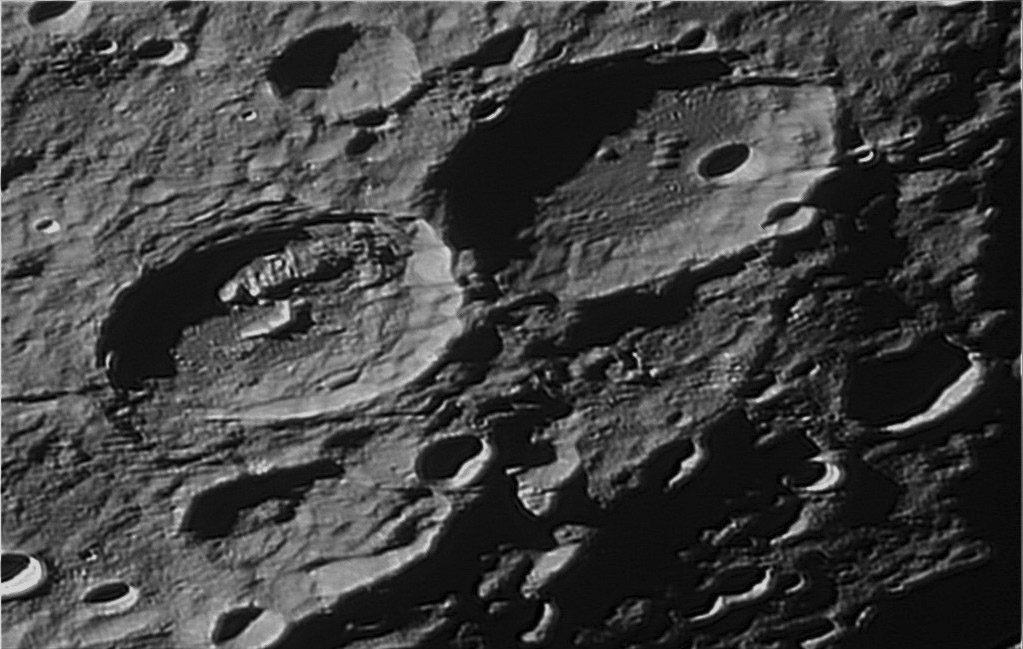Difference between revisions of "April 2, 2014"
| Line 3: | Line 3: | ||
<!-- ws:start:WikiTextHeadingRule:0:<h1> --> | <!-- ws:start:WikiTextHeadingRule:0:<h1> --> | ||
<!-- ws:start:WikiTextLocalImageRule:6:<img src="/file/view/LPOD-Apr2-14.jpg/499960444/LPOD-Apr2-14.jpg" alt="" title="" /> -->[[File:LPOD-Apr2-14.jpg|LPOD-Apr2-14.jpg]]<!-- ws:end:WikiTextLocalImageRule:6 --><br /> | <!-- ws:start:WikiTextLocalImageRule:6:<img src="/file/view/LPOD-Apr2-14.jpg/499960444/LPOD-Apr2-14.jpg" alt="" title="" /> -->[[File:LPOD-Apr2-14.jpg|LPOD-Apr2-14.jpg]]<!-- ws:end:WikiTextLocalImageRule:6 --><br /> | ||
| − | <em>image by [mailto:jdelpeix@gmail.com | + | <em>image by [mailto:jdelpeix@gmail.com Jordi Delpeix Borrell], l'Ametlla del Vallès (Barcelona) Spain</em><br /> |
<br /> | <br /> | ||
| − | Fabricius and Metius are two, just touching, similar diameter craters named after 17th century Dutch astronomers. Based on its smoothed inner walls, shallower depth (about 1 km shallower according to LRO QuickMap), and less crisp rim crest, Metius is older than Fabricius. Additional evidence for this is the faint linear ridges on Metius' floor that appear to be ejecta deposits from Fabricius. The lighting in Jordi's view is more revealing of these deposits, and [http://bit.ly/1gmCK41 | + | Fabricius and Metius are two, just touching, similar diameter craters named after 17th century Dutch astronomers. Based on its smoothed inner walls, shallower depth (about 1 km shallower according to LRO QuickMap), and less crisp rim crest, Metius is older than Fabricius. Additional evidence for this is the faint linear ridges on Metius' floor that appear to be ejecta deposits from Fabricius. The lighting in Jordi's view is more revealing of these deposits, and [http://bit.ly/1gmCK41 LRO] shows them with higher illumination and resolution. Evidence of the relative youth of Fabricius is the preservation of impact melt on its floor with cooling cracks seen on [http://bit.ly/1gmD7vs LRO]. The upper rim of Fabricius is bright under Full Moon [http://bit.ly/1gmDtlQ lighting], due to revealing of fresh material on the steep slope, whereas Metius nearly disappears. <br /> |
<br /> | <br /> | ||
| − | <em>[mailto:tychocrater@yahoo.com | + | <em>[mailto:tychocrater@yahoo.com Chuck Wood]</em><br /> |
<br /> | <br /> | ||
<strong>Technical Details</strong><br /> | <strong>Technical Details</strong><br /> | ||
Revision as of 20:06, 17 January 2015
Young And Old

image by Jordi Delpeix Borrell, l'Ametlla del Vallès (Barcelona) Spain
Fabricius and Metius are two, just touching, similar diameter craters named after 17th century Dutch astronomers. Based on its smoothed inner walls, shallower depth (about 1 km shallower according to LRO QuickMap), and less crisp rim crest, Metius is older than Fabricius. Additional evidence for this is the faint linear ridges on Metius' floor that appear to be ejecta deposits from Fabricius. The lighting in Jordi's view is more revealing of these deposits, and LRO shows them with higher illumination and resolution. Evidence of the relative youth of Fabricius is the preservation of impact melt on its floor with cooling cracks seen on LRO. The upper rim of Fabricius is bright under Full Moon lighting, due to revealing of fresh material on the steep slope, whereas Metius nearly disappears.
Chuck Wood
Technical Details
September/23/2013. C9,25" + Barlow 2X + DSLR Canon EOS 550D. Processed with Registax6.
Related Links
21st Century Atlas chart 5.



